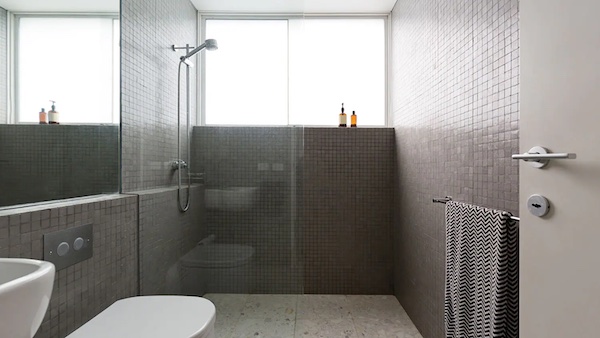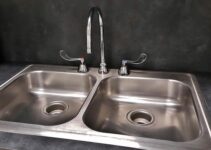If your bathroom smells like sewer, the problem can be more than you think. The problem of a stinking bathroom goes beyond the unpleasant odor; it extends to health risks, and basement or structural damage. Apart from the offensive sewer smell in your bathroom, you could experience headaches, nausea, shortness of breath, drowsiness, and heart palpitations if you breathe in sewer odor.
Depending on the cause of the bathroom odor, the integrity of your basement or bathroom area is at risk if the problem is plumbing-related. This is largely because a plumber might break open sections of your home in order to get to the root of the sewer smell, and the repairs may be expensive.

In this guide, we shall examine the reasons your bathroom smells like sewer after a shower and how to fix the problem.
Why Your Bathroom Smells Like Sewer After a Shower
If you always perceive an unbearable stench emitting from your bathroom after each use, it signifies problems that are not altogether uncommon. Let’s review some of the causes and the process behind them:
1. Drain pipes clogged with waste
If you perceive an unpleasant sewer smell coming from your bathroom after each use, the problem might be due to blockage in the drain pipes. Waste materials such as wads of hair, lint, toilet paper, sponges, soap scum, and even a dead rate may be lodged in the drain pipe, causing a blockage. The clog will prevent waste water from draining away, causing a buildup of water infested with bacteria and odorous to perceive.
2. Dry shower trap
The shower trap should contain water that stops sewage gas from leaking back into the bathroom. If the water in the p-trap becomes dry, sewage gas from the septic tank will flow back into the house, causing offensive odors. But with water in the shower trap or p-trap, the septic odor is blocked from wafting into the house.
3. Blocked drain vent
A drain vent is usually a pipe that goes through the attic or roof and opens into the atmosphere. It helps trapped gas from the drainage system to flow out into the air – gas that could flow back into the house if the vent is blocked. During winter, blocks of ice or other debris could enter this open vent and cause blockage, causing septic gas to back up into the house with a terrible smell.
4. Leaking methane gas in septic tank
A mounting volume of solid waste in your septic tank could generate methane gas that backs up into the bathroom through the drain vent. Since the water in the p-trap within the toilet unit will prevent the buildup of gas within the septic tank to enter the house through the toilet, the gas will find a way through the bathroom system since the bathroom and toilet drains may have been connected to the same septic tank.
5. Mold or mildew growth in drain pipes
The growth of mold or mildew in drain pipes may cause clogs that generate sewer and musty odors to back up into the bathroom. Mildew grows in humid and dark places, and your bathroom may be the ideal environment to thrive if the drain system is blocked and wastewater accumulates in the pipes.
6. Damaged drain or sewer pipes
If the main drain is broken or the sewage pipes are cracked, sewer gases will escape through the cracks and waft back into the house. If your house is located close to natural vegetation, the roots of a tree may have grown under your house and damaged the sewer pipes, causing the collapse or deterioration of the main drain among other plumbing works.
Bathroom Smells Like Sewer After Shower: How to Fix
Depending on the causes of the sewer smell in your bathroom, you may fix the problem yourself or contact a licensed plumber for help. However, below are some DIY hacks that should help with eliminating the offensive sewage smell in your bathroom:
- Remove all obstructions in your drain pipes
All waste materials blocking passage of water from your bathroom must be cleared away to prevent the buildup of mold and backing up of unpleasant smells. Some of the common obstructions in your drain pipe would be soap scum, wad of hair, mineral deposits, sponge, debris, lint, and toilet rolls among others. All these must be cleared away to allow the free passage of shower water into the septic tank.
- Fill a dry p-trap with water
The p-trap is the U-shaped section of your bathroom drainage pipe that is often filled with water. The function of the water in the p-trap is that it prevents septic gas from backing up into the bathroom through the drain pipes – the water blocks the gas from reaching the house. If the shower p-trap is dry, fill it with the appropriate water level and it will eliminate offensive sewage odors from reaching you.
- Clean with baking soda and vinegar
A mixture of baking soda and distilled white vinegar will destroy the buildup of mold or mildew in your drain pipe and prevent the accumulation of biofilm in your bathroom sewage system. Although biofilm can be mistaken for mold, it is actually a muck or slime of a glue-like substance that forms on river rocks, the bottom of boats, and in showers among other places. A combination of baking soda and white vinegar washed with hot water will take care of this problem.
- Fix plumbing leaks
This is as simple and as straightforward as it sounds. If you find broken shower pipes and drain vents where sewer odor is emitting into the house, call a professional plumber to repair the fixture. A licensed and accredited plumber will be able to fix any plumbing damage associated with your drainage system, and these range from leaking pipes, clogged drainage, mold buildup, dysfunctional p-trap, and general plumbing maintenance among others.
Whether you apply the DIY techniques outlined for identifying the causes of sewer smells in your bathroom as outlined in this guide, or you hire a professional technician to diagnose and fix the problem, we are double sure that the offensive smell of sewer in your bathroom will be eliminated after studying this guide.





